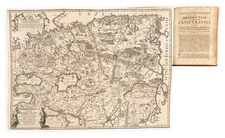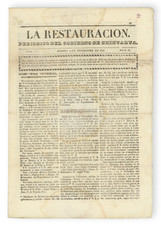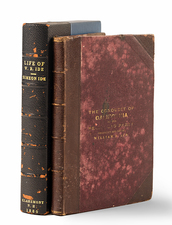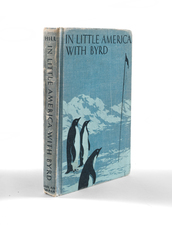One of the Earliest Scholarly Works of the United States
Important volume detailing Comte de Volney's three-year voyage to the United States from 1795 to 1798.
Leaving France as a political refugee, Volney traveled throughout the eastern portion of the United States, eventually documenting what he learned from his journeys in this work.
This text is not so much a travel book, of which several had already been published regarding the United States, but rather a scientific piece that details the physical and human geography of the country. Volney notices and describes the topography, soil, climate, winds, diseases, and other relevant features of the area, each of which he documents in its own chapter. He delves into various topics such as the reasons why the depths of tree roots might be shallower in New Jersey rather than in Europe and the physiological characteristics of Native Americans.
The work includes two maps. The first, a map of the United States, shows Volney's route from Boston all the way eastwards towards the Wabash River, before returning along a southern route. The topographic map shows the important features of the new country. The second map shows North America, focusing on prevailing winds and sea currents. Curiously, what appears to be the Gulf Stream is shown with an "old" and a "new" version.
This example dates from an 1822 reprint by Bosanges Freres of the original 1803 Volney edition.
Volney
Constantin François de Chasseboeuf, Comte de Volney, was a French philosopher, abolitionist, historian, orientalist, and politician. Born in Anjou, he became interested in various academic subjects at a young age. He spent several years in Egypt and the Middle East before returning to France. Despite his liberal and atheist views, he was still unpopular with the Jacobins during the revolution, and traveled to the US to escape the guillotine.
His journey to the US was successful, however, he was accused by the Adams administration of being a French spy, sent by the government to investigate Louisiana for reoccupation. He subsequently returned to France to publish his Tableau du climat et du sol des États-Unis, and was appointed to Napoleon's senate. During his time in the US, he collaborated with Thomas Jefferson to produce an English translation of his Ruins of Empires, which argued that empires thrive when liberal enlightenment is allowed to flourish. However, Jefferson's involvement in the matter was meant to remain unknown due to the book's anti-religious themes.














![Carte generalle de la Geograrhie [sic] Royalle. Par le Sr. Tasin geographe du roy [bound with:] Cartes generalles de toutes les Provinces de France et d'Espaigne . . .](https://storage.googleapis.com/raremaps/img/small/90475.jpg)

